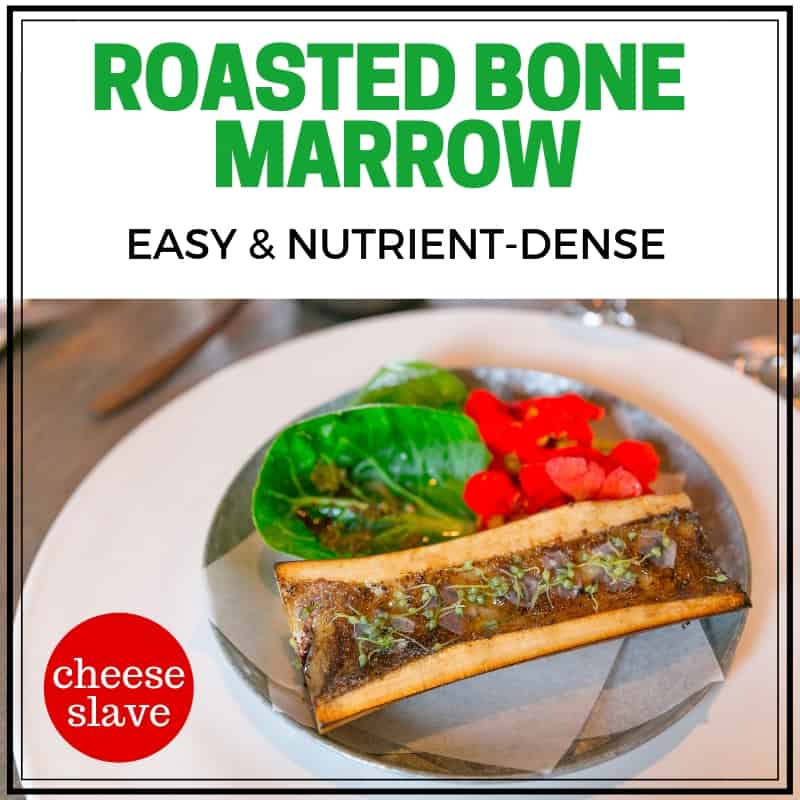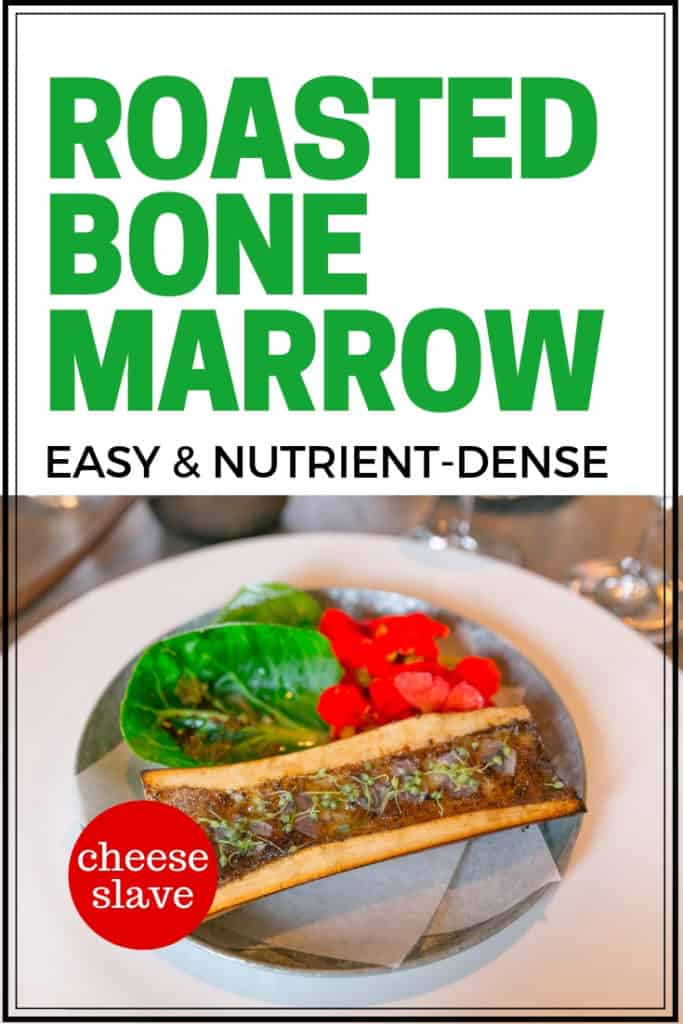Roasted Bone Marrow
If you’ve been afraid to try roasted bone marrow, I promise that you will love this recipe.It comes (only slightly modified) from Chef Fergus Henderson, the guy who started this whole trend of nose-to-tail eating.

If you’ve been afraid to try roasted bone marrow, I promise that you will love this recipe. It comes (only slightly modified) from Chef Fergus Henderson, the guy who started this whole trend of nose-to-tail eating. Okay, he didn’t start it — nose-to-tail eating has been around for thousands of years. He reinvigorated it.
Enough with the skinless, boneless chicken breasts shrink-wrapped in plastic! Bring on the bones, the glands and the organs, the skin and the feet. Bring on the heads and tails and intestines! If you’re scared to try these parts, it’s time to man up, people!

Why Organ Meats?
Bone marrow is an easy way to get more organ meats into your diet. It’s the best starter food for those of you chickens out there.
Besides that, bone marrow is delicious! I heard someone call it “meat butter”. It’s a savory blast of umami that melts like, well, like butter, in your mouth.
Why would you want to get more organ meats into your diet? Because they are the most nutrient-dense foods on the planet. Organ meats contain 10-100 times more vitamins and minerals than muscle meats.
Every time I meet someone with perfectly white, straight piano-key teeth who grew up in a traditional culture (such as a village in Mexico or Honduras or Russia), I always ask them what they grew up eating. They always say organ meats. They usually say they ate organ meats a few times a week. How often do you eat organ meats at your house?
Dr. Weston Price writes about the native American Indians and how they prized bone marrow for the nutrition in his book, Nutrition and Physical Degeneration:
For the Indians living inside the Rocky Mountain Range in the far North of Canada, the successful nutrition for nine months of the year was largely limited to wild game, chiefly moose and caribou. During the summer months the Indians were able to use growing plants. During the winter some use was made of bark and buds of trees. I found the Indians putting great emphasis upon the eating of the organs of the animals, including the wall of parts of the digestive tract.
Much of the muscle meat of the animals was fed to the dogs. It is important that skeletons are rarely found where large game animals have been slaughtered by the Indians of the North. The skeletal remains are found as piles of finely broken bone chips or splinters that have been cracked up to obtain as much as possible of the marrow and nutritive qualities of the bones. These Indians obtain their fat-soluble vitamins and also most of their minerals from the organs of the animals. An important part of the nutrition of the children consisted in various preparations of bone marrow, both as a substitute for milk and as a special dietary ration.
For more delicious organ meat recipes from Chef Fergus, you simply must buy his book, The Whole Beast: Nose to Tail Eating. I am the proud owner of an autographed copy.
Equipment Needed for This Recipe
Parchment– or Silpat-lined baking sheet or in ovenproof skillet
Mixing bowl
Pin This Post: Roasted Bone Marrow




Comments ()